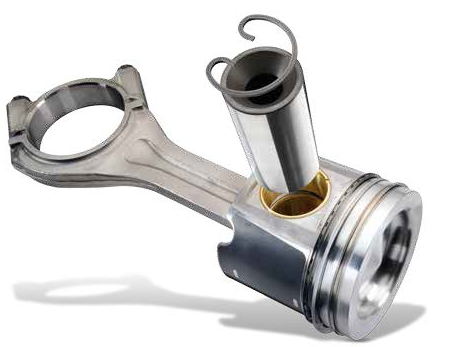In most instances, when a connecting rod is damaged, particularly in the case of a “thrown rod” where the rod has broken free from the crankshaft and potentially caused extensive engine damage, it cannot be effectively repaired. However, minor defects such as small cracks or imperfections might be repairable in specialized machine shops, though this isn’t common. The standard practice in the automotive industry is to replace faulty connecting rods rather than attempt a repair.

Understanding Connecting Rod Damage
Connecting rods are integral components in the internal combustion engine, responsible for converting the piston’s reciprocating motion into the crankshaft’s rotary motion. Due to their pivotal role and the intense stresses they undergo, connecting rods can become damaged, particularly in high-performance or improperly maintained engines.
Damage to a connecting rod, often referred to as a “thrown rod,” is a serious mechanical issue. When a rod “throws,” it typically means it has broken free from its bearing and is no longer smoothly turning the crankshaft. This can cause significant damage to the engine, often puncturing the engine block and causing catastrophic failure.
Repairing vs. Replacing Connecting Rods
The process of repairing a damaged connecting rod is complex and requires specialized knowledge and equipment. Even in cases where repair might be technically possible, the integrity of the rod can be compromised, leading to potential failures in the future.
In contrast, replacing a damaged connecting rod is a more reliable solution. Replacement rods are readily available from a variety of manufacturers and can be selected based on the specific needs of the engine.
| Action | Description | Outcome |
|---|---|---|
| Repairing | Possible in case of minor defects. Requires specialized machinery and knowledge | Might compromise the integrity of the rod |
| Replacing | Most common solution. Variety of replacement options available | More reliable and less likely to lead to future problems |
Preventing Connecting Rod Damage
Preventing damage to connecting rods is much more desirable than attempting repair or replacement. This prevention primarily involves proper engine maintenance and operation. Key elements include using high-quality oil, adhering to scheduled maintenance and oil changes, and avoiding extreme engine loads, particularly in engines not designed for high-performance applications.
In Conclusion
While minor repairs to a connecting rod might technically be possible in certain circumstances, the most reliable solution when dealing with damaged rods is typically replacement. Proper maintenance and operation of the engine are crucial to avoid such damage in the first place. Always consult with a professional mechanic or engineer when dealing with complex engine components like connecting rods.
